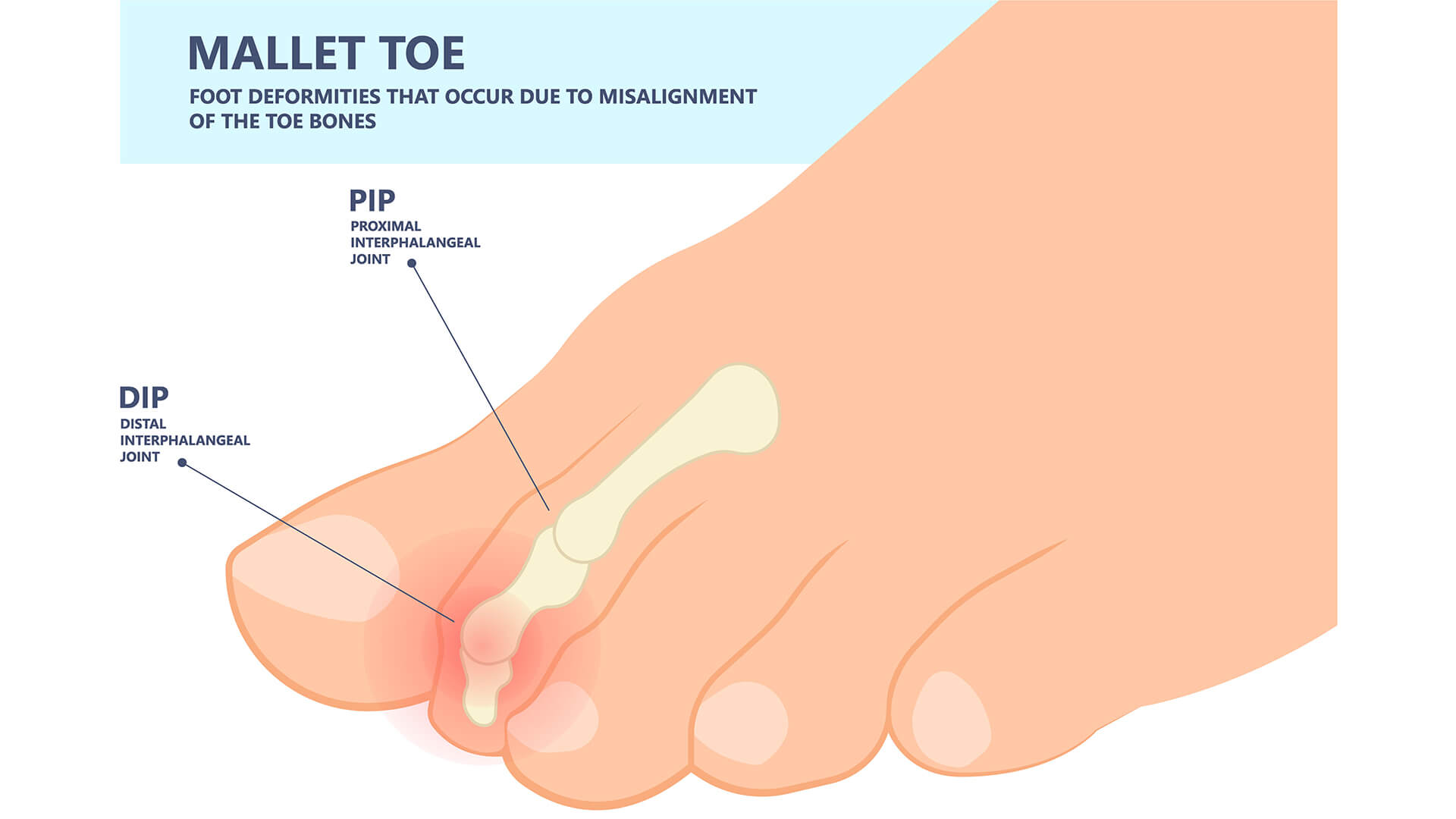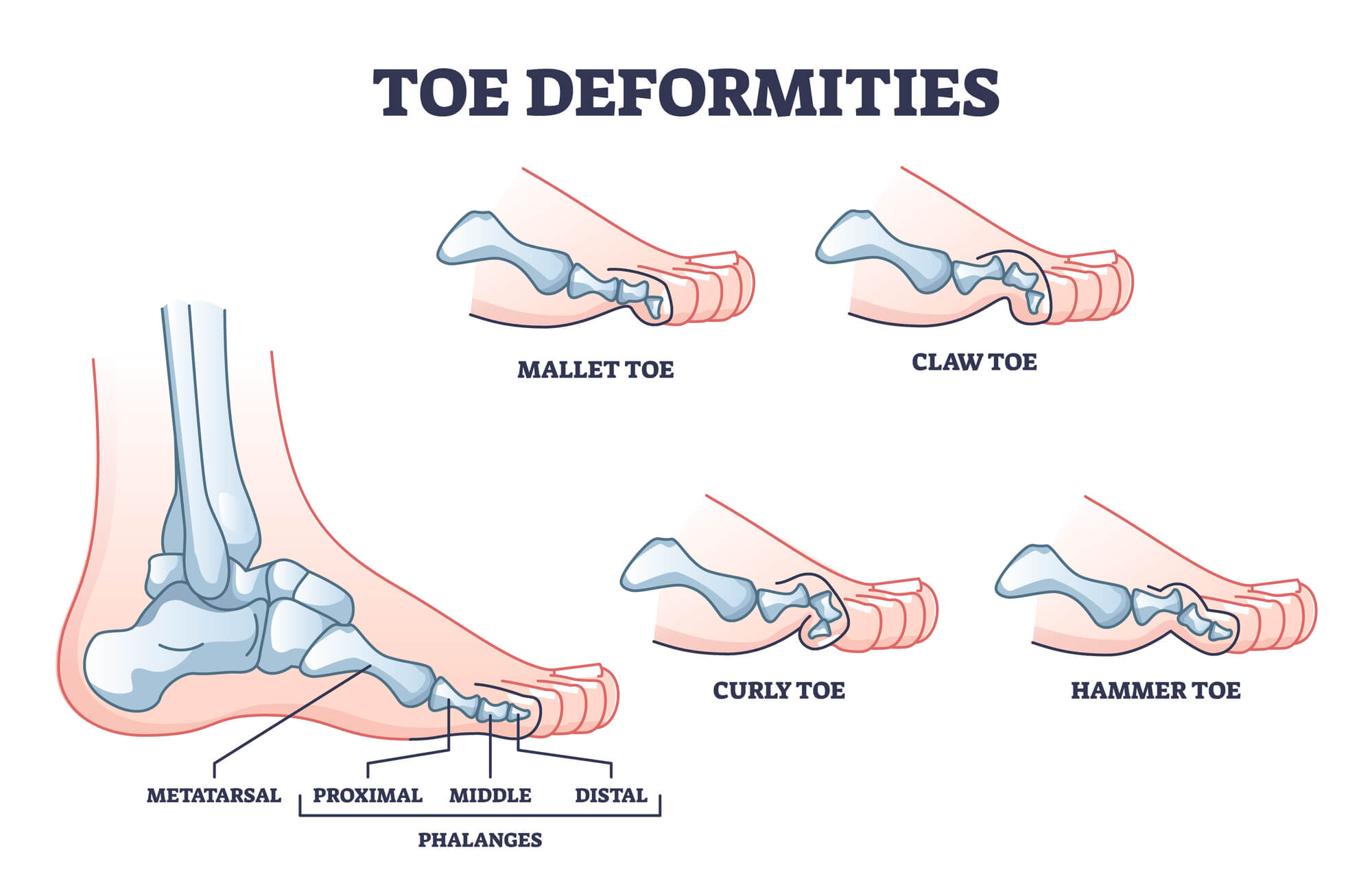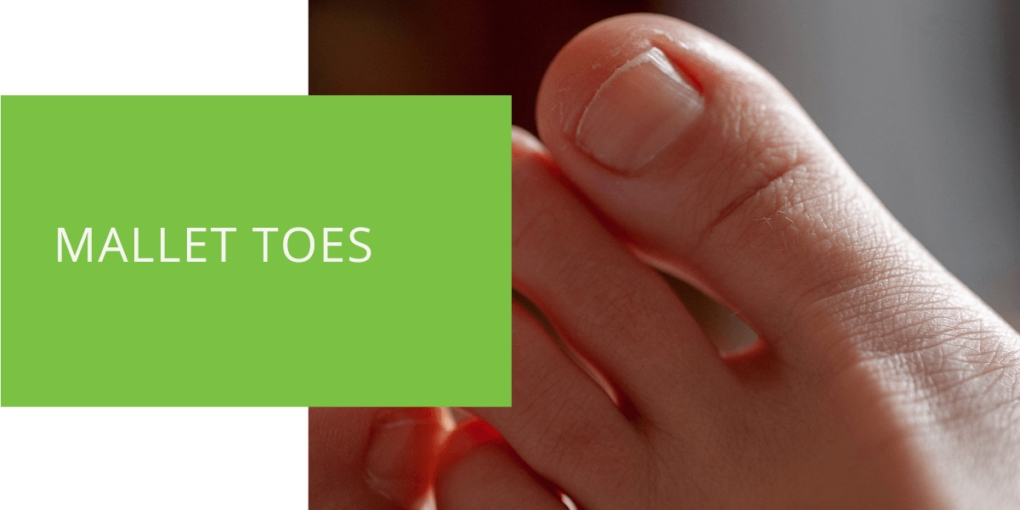Mallet Toes: Causes, Symptoms & Treatment
Mallet toes are a common foot deformity that can cause pain and discomfort. If you have a mallet toe, the joint at the end of your affected toe will bend downward, causing the toe to curl under your foot. While this deformity can occur in any of your toes, it is most commonly seen in the second toe. This article will explore the causes, symptoms, and treatment options for mallet toes, as well as how to prevent the development of this foot condition.
What are Mallet Toes?
Definition
A mallet toe is a foot deformity that causes the joint at the end of your toe to bend downward. This deformity can occur in any of your toes but is most commonly seen in the second toe. As the joint bends downward, the toe will curl under your foot, giving it a hammer-like appearance.
Appearance
If you have a mallet toe, the affected toe may appear shorter than your other toes and may have a downward bend at the joint nearest to your toenail. You may also notice that your toe is bent at a sharp angle, causing it to rub against your footwear. This constant rubbing can lead to the development of calluses or corns on your toe.

Causes of Mallet Toes
Tight Shoes
One of the most common causes of mallet toes is wearing tight shoes that squeeze your toes together. When your toes are crowded together in a small space, it can cause the joints in your toes to bend and become deformed. This is especially common in shoes with a narrow toe box, as they do not allow your toes enough room to move and stay straight.
Foot Injuries
Foot injuries, such as fractures or sprains, can also cause mallet toes. If you have an injury that affects the tendons or bones in your foot, it can cause the joint at the end of your toe to bend downward.
Arthritis
Arthritis is a condition that can cause inflammation and stiffness in your joints. If you have arthritis in your foot, it can cause the tendons in your foot to become tight and inflexible. This can lead to the development of a mallet toe, as the tendons cannot straighten your toe properly.
Hereditary Factors
Mallet toes can also be a result of hereditary factors. If you have a family history of foot deformities, you may be more likely to develop a mallet toe.

Symptoms of Mallet Toes
Pain
One of the most common symptoms of a mallet toe is pain. The constant rubbing of your toe against your footwear can cause the development of calluses or corns, which can be painful. You may also experience pain when walking or standing for long periods.
Difficulty Walking
If you have a mallet toe, you may find walking difficult. The deformity in your toe can cause your foot to feel unbalanced, making it difficult to walk.
Treatment Options for Mallet Toes
Non-Surgical Treatments
If you have a mild case of a mallet toe, your podiatrist may recommend non-surgical treatment options to help alleviate pain and discomfort. These treatments may include:
- Wearing properly fitting shoes: One of the most effective ways to treat a mallet toe is to wear shoes that fit properly and have a wide toe box. Avoiding tight or narrow shoes will help to prevent further deformity of your toe.
- Using pads or inserts: Pads or inserts placed on the affected toe can help reduce the deformity's pressure and friction. This can help to alleviate pain and prevent the development of calluses or corns.
- Stretching and strengthening exercises: Doing exercises to stretch and strengthen your foot muscles can help improve your toes' flexibility and strength. This can help to straighten your toe and prevent the development of a mallet toe.
- Wearing orthotics: Orthotics, or shoe inserts, can help to realign your foot and improve your gait. They can also help to reduce pressure on the affected toe and alleviate pain.
Surgical Treatments
If your mallet toe is severe or does not respond to non-surgical treatments, your podiatrist may recommend surgical treatment. There are several surgical options available to correct a mallet toe, including:
- Toe joint fusion: In this procedure, the affected joint is fused to keep it straight. This procedure is usually only recommended for severe cases of a mallet toe.
- Toe joint resection: In this procedure, the affected joint is removed to straighten the toe.
- Toe joint realignment: In this procedure, the affected joint is realigned to straighten the toe.
Your podiatrist can recommend the best surgical treatment option for your specific case.

Preventing Mallet Toes
Wearing Properly Fitting Shoes
One of the most effective ways to prevent the development of a mallet toe is to wear shoes that fit properly and have a wide toe box. Avoiding tight or narrow shoes will help prevent your toe's deformity. Having your feet measured regularly is important to ensure that you wear the correct shoe size.
Stretching and Strengthening Exercises
Exercising to stretch and strengthen your foot muscles can help improve your toes' flexibility and strength. This can help to prevent the development of a mallet toe. Your podiatrist can recommend specific exercises for you to do to help prevent this foot condition.
Wearing Orthotics
Orthotics, or shoe inserts, can help to realign your foot and improve your gait. They can also help to reduce pressure on your toes and prevent the development of a mallet toe. If you risk developing a mallet toe, your podiatrist may recommend wearing orthotics to help prevent the deformity.
Conclusion
Mallet toes are a common foot deformity that can cause pain, difficulty walking, and the development of calluses or corns. Tight shoes, foot injuries, arthritis, and hereditary factors can cause them. Several treatment options are available for mallet toes, including non-surgical and surgical treatments. To prevent the development of a mallet toe, it is important to wear properly fitting shoes, do stretching and strengthening exercises, and consider wearing orthotics. If you are experiencing symptoms of a mallet toe, it is important to see a podiatrist for proper diagnosis and treatment.

